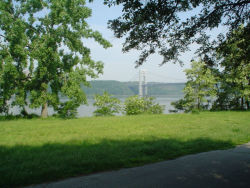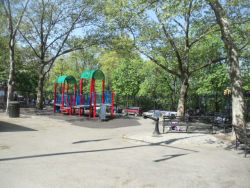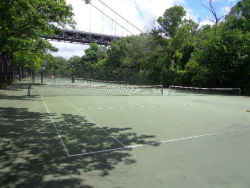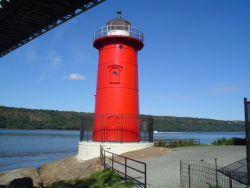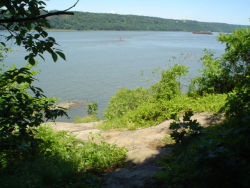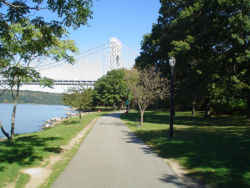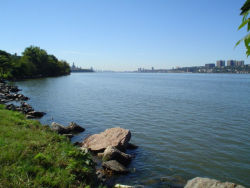Fort Washington Park
Dyckman Street Boat Marina
The Dyckman Street Boat Marina in Fort Washington Park is named for the Dyckman family who were among the original Dutch settlers of Manhattan island, and owned most of the land in the immediate area.
The first of the family to arrive in America, Jan Dyckman emigrated from Holland in the mid-1600s. A shoemaker by trade, Jan and another Dutch settler named Jan Nagel purchased much of the land between present-day 155th Street and the northern end of the island. Members of the Dyckman and Nagel families lived on this land for three generations, until the onset of the Revolutionary War (1776-1783). British troops occupied the Dyckman home after the family fled. Upon their return the Dyckmans found their house ruined, prompting them to build a new farmhouse on the Kingsbridge Road, which is now Broadway and 204th Street.
Occupied between 1785 and 1865, the Dyckman House provided accommodations to travelers and livestock in transport to lower Manhattan. It is the only remaining 18th century farmhouse in Manhattan. At its peak, the farm included all the land from Fort George Hill to 230th Street (which was once part of the island of Manhattan) and from the Harlem River to Broadway. The farmhouse is now a museum detailing the lives of these early settlers.
From 1915-1942, ferries operated by the Englewood-Dyckman Company transported cars and passengers from this location to the Palisades beaches across the Hudson River. Beach and ferry use peaked in the early years of the Depression. Once the George Washington Bridge opened in 1931, serious competition for traffic began. Ferry usage declined from one million to 300,000 vehicles in one year, and the ferry company closed in 1942.
Years of abandonment followed. Land including the Marina was assigned to Parks in 1966. In an arrangement with Parks, the Dyckman Marine Venture made plans in 1987 to develop the marina, construct a pier, and open up a restaurant on the site. Parks agreed to let them use the land rent free in exchange for their investment. A federal grant funded the $420,000 pier. Within two years, the operators had completely overhauled the marina. With its brand new docks and fishing pier, the marina now thrives. Permanent bathrooms are now available. The foot of Dyckman Street was added to the park in 1995, further increasing the use of this section of waterfront park. The marina also features Tubby Hook Café and Bar, a full service café with lovely sunset views overlooking the Hudson, and the George Washington Bridge glistening to the south. Tubby Hook Café has become a popular live music venue, specializing in Latin American Rock performances.
Check out your park's Vital Signs
Clean & Safe
Green & Resilient
Empowered & Engaged Users
Share your feedback or learn more about how this park is part of a
Vital Park System

Know Before You Go


